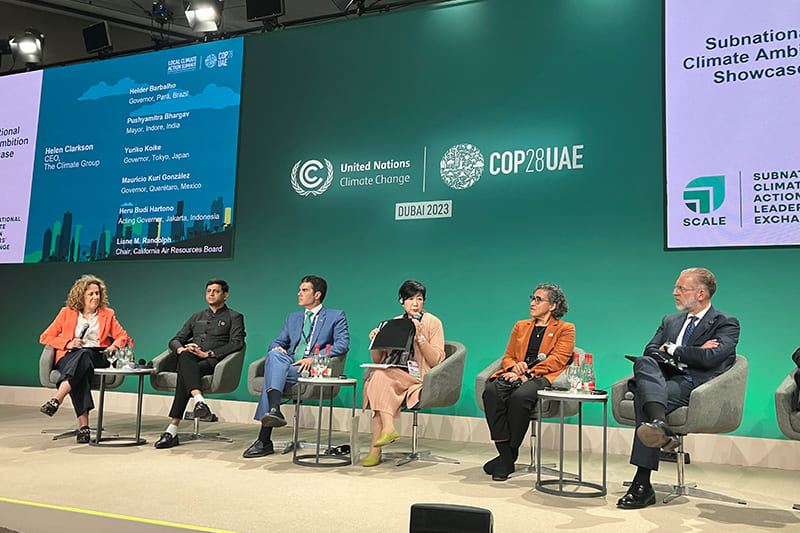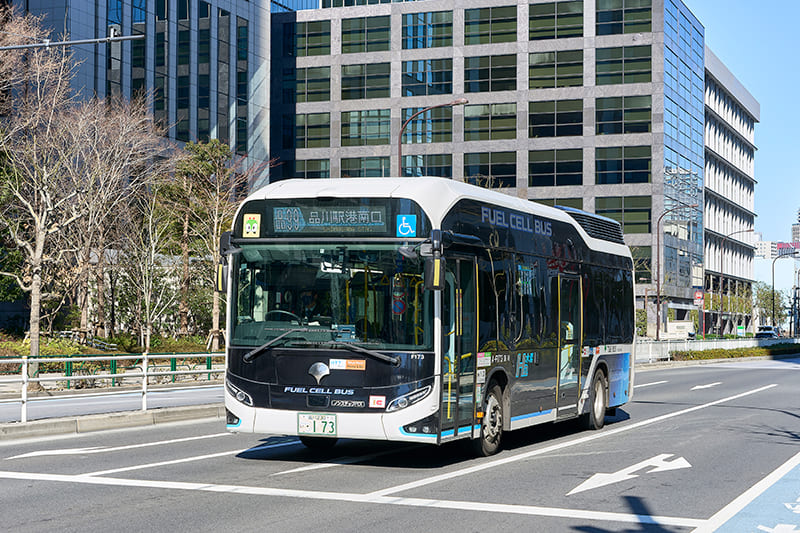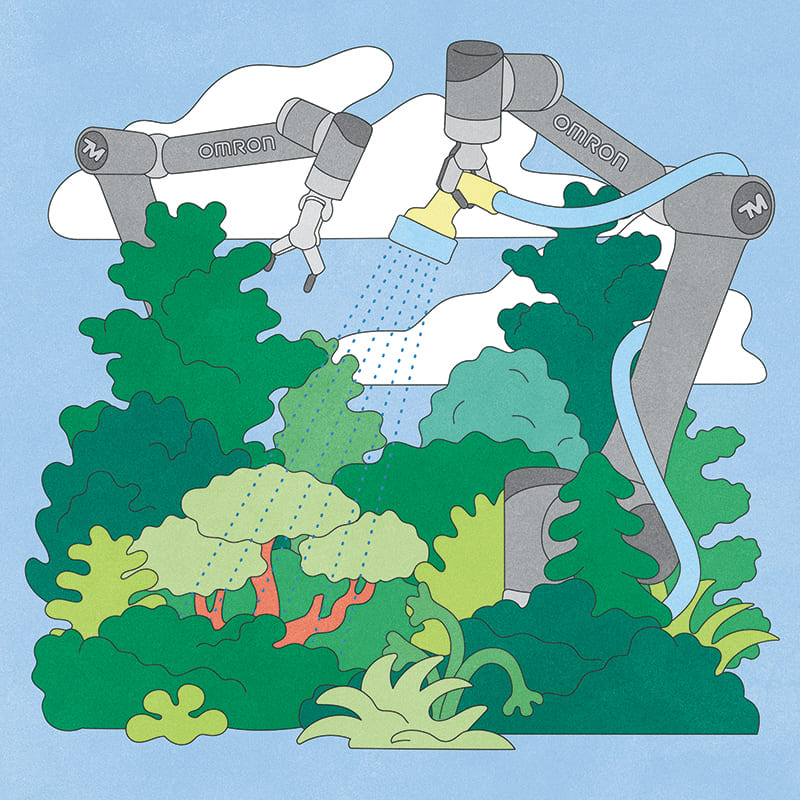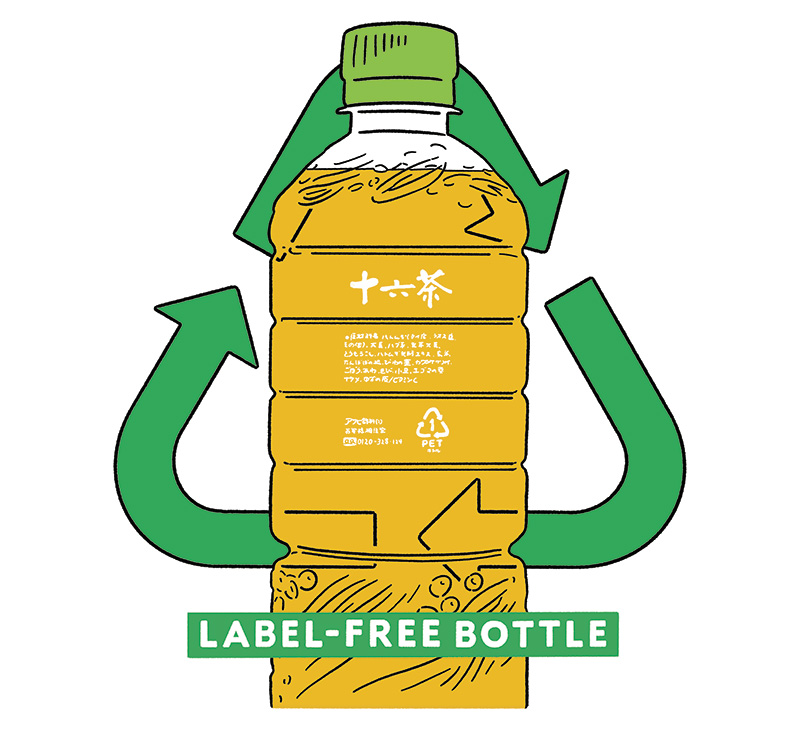March 29, 2024
Tokyo leads the way to carbon neutrality
ZERO EMISSIONS

COURTESY: TOKYO METROPOLITAN GOVERNMENT
120 cities around the world were included in the 2023 edition of the international nonprofit CDP’s A List for cities, which showcases cities that are leading on environmental performance. Only eight were located in Asia, and over the last three years only one city in Japan, namely Tokyo, has been included every year. This demonstrates the capital’s attitude of always leading the rest of the nation in taking action.
It was in May 2019 that the Tokyo Metropolitan Government declared that as a major city it had a responsibility to achieve zero carbon emissions, and thereby contribute to the nation attaining net-zero by 2050. Other prefectures with major cities are now following suit.
In October 2020, then-Prime Minister Yoshihide Suga declared that Japan would aim to achieve carbon neutrality by 2050. Within three months of that announcement, Tokyo was already making its next move.
It announced its “2030 Carbon Half” goal of reducing greenhouse gas emissions by 50% by fiscal 2030, compared to the level of fiscal 2000. Three months after that, Suga also announced that Japan would aim to reduce greenhouse gas emissions by 46% in 2030, compared to the level of 2013.
“We welcomed the country’s declaration. The whole country moves based on what the national government says,” said Akiko Miura, senior director for planning at the Environment Bureau’s General Affairs Division.
“What kind of goals are set by major cities around the world such as Paris, London and New York? We are watching them and using them as reference points, including regions and countries such as California and Germany. Our mentality is to work with these other jurisdictions to lead the world,” she continued.
Leading on solar
In Japan, Tokyo has always been ahead of the curve. In recent years, this attitude has been demonstrated by a decision to mandate the installation of solar panels.
Having revised the relevant ordinance in December 2022, the Tokyo Metropolitan Government will require solar panels to be installed in all newly built residences from April 2025.
This “solar obligation,” which includes small homes, is also being introduced in New York and California in the United States, and Berlin and various states in Germany, but this is the first attempt of its kind in Japan. Kawasaki is also playing a leading role, having followed Tokyo to kick off the solar obligation from April 2025 as well.
And yet, the net effect of this measure alone will be limited, with CO2 emissions from residences in Tokyo to drop by 430,000 tons by 2030 as a result. This accounts for just 5% of the reduction target for Tokyo’s residential sector, which makes up about 30% of the city’s total. Is that a lot, or a little?
“There is no single measure that alone will dramatically reduce CO2 emissions in households, industry, business or transportation,” Miura said. “Reducing CO2 emissions by even 0.1% is difficult, so there is no choice but to take every small step we can.”
In the residential sector, energy conservation will also help. In the new fiscal year’s budget, starting in April, ¥10 billion ($70 million) has been earmarked to support the replacement of old home appliances with more energy-efficient ones. Additionally, ¥25.1 billion has been set aside for a subsidy to encourage people to build houses with high insulation and energy-saving performance. Altogether budgetary measures addressing energy conservation will approximately double from the previous year, to ¥131.5 billion. The sheer scale of the funding shows just how seriously Tokyo is taking this challenge.
The Tokyo Metropolitan Government also has high hopes for the latest domestically produced technologies. Chemical maker Sekisui Chemical has developed thin and light film-like “perovskite solar cells” that are more flexible and durable than conventional solar panels and can even be installed on exterior walls, where conventional panels have proved difficult to install. The Tokyo Metropolitan Government is conducting joint research with Sekisui Chemical to commercialize the technology, and in May 2023 began trialing them at sewage treatment facilities.
Also underway is the world’s first privately funded project to install perovskite solar cells capable of generating over 1 megawatt on the walls of a high-rise building in the city center. In fiscal 2024, further funds will be allocated to accelerate such projects, and the Tokyo Metropolitan Government is poised to provide medium- to long-term support. One day, all the walls of government-related facilities, including the Tokyo Metropolitan Government Building itself, may generate electricity.

COURTESY: TOKYO METROPOLITAN GOVERNMENT
Clean and green hydrogen energy
Approximately 20% of the city’s total CO2 emissions come from the transportation sector, and 80% of those from automobiles. Tokyo aims to support the trend toward zero-emission vehicles (ZEVs) and reduce CO2 emissions through a subsidy system to support the purchase of such vehicles and the development of charging facilities. Of course, such measures are common to many cities around the world. But Tokyo is not just targeting electric vehicles (EVs) and related infrastructure; it is also targeting hydrogen-powered fuel cell vehicles (FCVs). And of course, there is no point in using hydrogen if CO2 is emitted in its production.
“Most of the hydrogen energy currently in use is ‘gray.’ It is important to transition this to ‘green hydrogen’ that has been produced using only renewable energy,” explained Norihiro Murano, director for hydrogen energy promotion at the industrial energy policy division.
Concrete measures to source green hydrogen are already underway.
For the 2024 fiscal year, the Tokyo Metropolitan Government has significantly increased its budget allocation for the social implementation of hydrogen energy to ¥20.3 billion, about 1.8 times the previous year. In addition to proceeding with the development of a green hydrogen production facility on government-owned land on Keihinjima, Ota Ward, the government is also providing strong support for the development of hydrogen stations and the introduction of FCVs.
Groundbreaking initiatives to promote the distribution of green hydrogen will also be launched in the coming financial year. These include efforts to launch a “green hydrogen exchange” and strengthening collaboration with overseas cities to build up international hydrogen supply chains.
The H2Global Foundation, which is supported by major European oil companies and the German and Dutch governments, is aimed at promoting the production, import and export of green hydrogen. The Tokyo Metropolitan Government aims to collaborate with the project to launch the green hydrogen exchange and build an international supply chain. Tokyo is currently the only sub-national government in the world to have signed a cooperation agreement with H2Global.
“We will pursue the most effective methods and explore all possibilities,” explained Shinri Tanaka, director of the hydrogen energy project promotion at the industrial energy policy division at the industrial and energy policy department. “Green hydrogen is absolutely necessary to realize a decarbonized society, and we will do everything in our power to make it happen.”
脱炭素とエネルギー確保先んじて動く東京都。
2019年5月、東京都は世界の大都市の責務として、2050年までにCO2排出実質ゼロに貢献する「ゼロエミッション東京」を実現すると宣言。大都市を抱える都道府県や日本政府が追随する格好となった。
常に先んじて行動する東京都。近年で言えば、「太陽光パネルの設置義務化(ソーラーオブリゲーション)」へ踏み切ったことが、その姿勢を如実に現している。小規模住宅をも対象としたソーラーオブリゲーションは、国内では初。ここでも日本の各都市をリードする。
国産の最新技術へも期待を寄せる。薄く軽いフィルム型の「ペロブスカイト太陽電池」。東京都は、その実用化に向けた共同研究や実証実験を積水化学と行っている。
さらに東京都は、再エネ由来のCO2フリーである「グリーン水素」を本格活用し、脱炭素社会実現の柱にしていくとする。水素ステーションの整備や燃料電池自動車(FCV)導入なども強力に支援する一方、グリーン水素の確保や調達における具体的施策でも、壮大な構想への種まきが始まった。
Return to Sustainable Japan Magazine Vol. 34 article list page

















